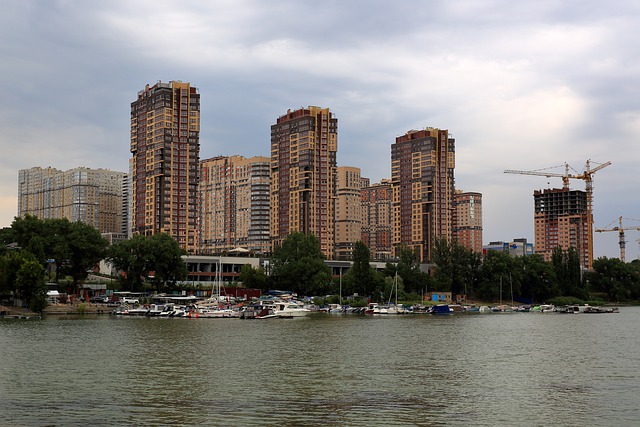Table of Contents
Real Estate problems in India
Real estate sector in India is expected to reach US$ 1 trillion by 2030. Emergence of nuclear families, rapid urbanisation and rising household income are likely to remain the key drivers for growth in all spheres of real estate, including residential, commercial, and retail. However, the challenges present in the market have refrained the industry from yielding full advantage of the development that has been going on for years now. Stagnancy in the market, declining sales volume, delayed projects, and lack of funds are some of the common issues that you get to hear when it comes to Indian real estate Opines Hirav Shah, who has managed his father’s real estate business for a while, and who knows the process and struggles in and out. His expertise in providing a timeline for clearance of unsold properties or inventory is unprecedented.
On that note, India’s bonafide Real Estate Strategist, Real Estate Financial Adviser and Astrologer, Hirav Shah outlines below some of the major current issues in real estate, that have been plaguing the industry.
1.Non-Availability of Land
Non availability of land still exists as one of the biggest hurdles faced by developers. This is despite a robust demand for commercial and residential projects across India. Moreover factors like cost of construction and a steady increase in land prices, is gradually making projects infeasible for homebuyers and developers alike. Today, considerable land parcels are held by the State and Central Government entities such as defence, railways etc… Its high time that the vacant land parcels are unlocked through land regulations in order to beat the shortage and attain Housing for all by 2022.
2. Unsold Inventory
A big challenge in the real estate sector is a large amount of unsold inventory, which makes it difficult for real estate developers to roll over the funds to start new projects.The reason is market stagnation. According to a recent report, Delhi NCR holds nearly 70 percent of the unsold housing stock across the top eight metro cities in India. Further, Maharashtra has close to 48 percent units lying vacant across the State. Despite excessive demand in the real estate sector, more than 30 percent of domestic housing and commercial spaces are lying vacant in major cities. Moreover, the lack of clear land titles, speculations, and procedural difficulties are also posing a threat to the market.
Other than the ones mentioned above, stringent development norms, unfavourable loan-to-value ratio, increasing preference for renting, and competitive investment options are some other factors hampering the growth of Indian real estate since long.
3. Soaring Property Prices
In markets like Mumbai, there is some scope for discounts since some properties are priced as high as Rs 30,000-50,000 per sq. ft. But developers operating on low margins do not have the luxury to do so. Moreover, there is no point in a builder offering heavy discounts if they are not confident of a surge in sales—that would harm their profitability.While taxes were earlier levied at 30 percent of the total cost of the property, the scenario changed post the introduction of Goods and Services Tax (GST). However, exclusion of stamp duty and registration charges from the purview of GST further posed hurdles for the homebuyers. According to the experts, stamp duty and registration charges together account for an additional tax payment of 5-7 percent of the home value. In order to curtail the property prices and make real estate an attractive proposition for the buyers, there is a need to merge the two charges with the existing GST rates or abolish them altogether.
4. Funds Deficiency
In the real estate industry, finance plays a significant role. Due to cautious lending by non-banking financial companies and due to dried up investments in the sector, a liquidity crisis has occurred and this has not only kept a lid on the number of fresh launches but have also adversely impacted the execution of several ongoing projects across the country. Moreover, there is no “industry” status for real estate and this restricts the developers to avail funds at cheaper rates, except for affordable projects.
5.Irrational Delays in Real Estate Projects
Various internal and external factors such as delay in approvals, mandatory approvals at multiple stages of construction, lack of funds, non availability of labour, delay in raw material procurement etc…result in irrational and unwanted delays in real estate projects. And this not only creates hurdles for the contractors but also results in disputes between buyers and developers. While RERA has identified and addressed the issue of right usage of funds, the sector further requires a single-window clearance system to streamline and fasten the project approval mechanism.
Conclusion
Some other commercial real estate problems and housing real estate issues, aside the ones mentioned above are, stringent development norms, unfavourable loan-to-value ratio, increasing preference for renting, and competitive investment options, Says Shah.
Real Estate Astrologer and Strategist, Hirav Shah Adds- One of the big reasons Real Estate businesses struggle to grow their business is because they have a wrong predictive method,apart from everything else.
But, there is good news here.
“Hirav Shah is a one stop solution for all real estate problems in the Country“.
Yes,
With Hirav Shah’s Astro-Strategic analysis for unsold inventories to know the sales timeline and when to get max value to your properties, real estate owners and Investors can get a comprehensive business strategy that guarantees the certainty of sales for any ongoing or upcoming inventories and projects.
In a nutshell, introducing Hirav Shah as part of your real estate strategy team can help you reap the benefits of certainty in your business strategy.








































